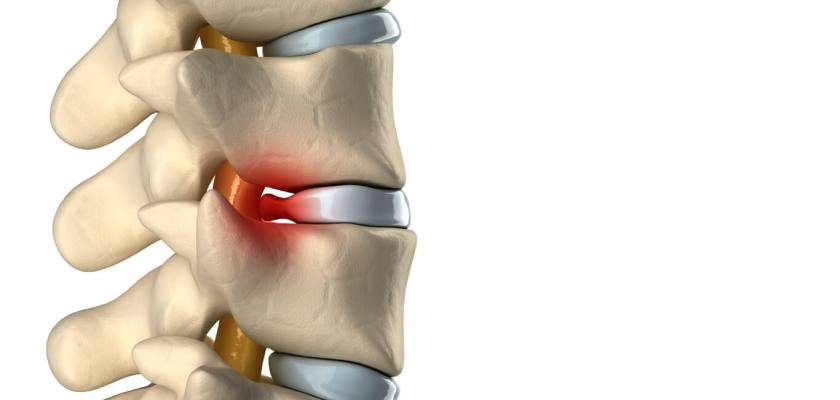
Slip disc is a common problem seen in adults with a sedentary lifestyle; it may be due to various reasons like faulty posture, trauma, or muscle weakness.
The discs are protective shock-absorbing pads between the bones of the spine (vertebrae). The discs of the spine are also referred to as intervertebral discs. Although they do not actually "slip," a disc may bulge, split, or rupture. This can cause the disc cartilage and nearby tissue to fail (herniate), allowing the inner gel portion of the disc to escape into the surrounding tissue. This protruding, jelly-like substance can place pressure on the spinal cord or on an adjacent nerve to cause symptoms of pain, numbness, or weakness either around the damaged disc or anywhere along the area supplied by that nerve.Treatments for a slipped disk range from conservative to surgical. The treatment typically depends on the level of discomfort you’re experiencing and how far the disk has slipped out of place.
Most people can relieve slipped disk pain using an exercise program that stretches and strengthens the back and surrounding muscles. A physical therapist may recommend exercises that can strengthen your back while reducing your pain.
Taking over-the-counter pain relievers and avoiding heavy lifting and painful positions can also help.
Your doctor may recommend surgery if your symptoms do not subside in six weeks or if your slipped disk is affecting your muscle function. Your surgeon may remove the damaged or protruding portion of the disk without removing the entire disk. This is called a microdiskectomy.
In more severe cases, your doctor may replace the disk with an artificial one or remove the disk and fuse your vertebrae together. This procedure, along with a laminectomy and spinal fusion, adds stability to your spinal column.
While at home, you will need to be cautious about your movements. Be sure to maintain proper posture when sitting and standing, and avoid heavy lifting or frequent forward bending. You must protect your back so that it can heal properly.
You will be encouraged to slowly increase your activity level during the first week of recovery after surgery for a herniated disc. Walking is a great exercise after surgery as it helps to improve aerobic endurance and promote circulation in your body.
During the week following surgery, you will be expected to slowly increase your activity level while providing moderate protection for your back by avoiding bending, lifting and slouched sitting. You should continue to remain out of work during the first week of your herniated disc surgery recovery time.
Slowly increase your activity level and watch your incision for redness, swelling or discharge which may be signs of infection. By the end of the first week, you should visit your doctor who will check your incision and monitor your symptoms.
